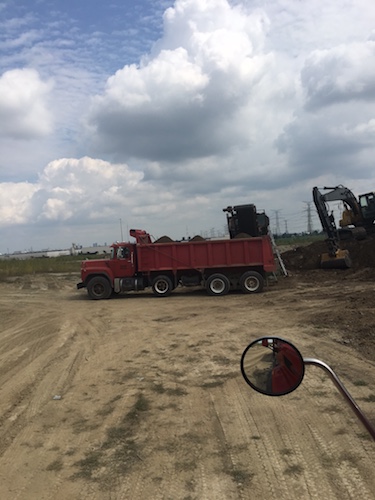Getting to Know the Most Common Trenching and Excavation Hazards
 Trenching and excavation work is not only a tough job but it can be a dangerous one. Be it repair workers addressing water, sewer, and/or utility lines, or workers involved with digging operations, there are many common concerns when it comes to working in trenching and excavation including the risk of a cave-in. A cave-in can be caused by any number of things and is by far the biggest worry among those in the industry. Fortunately, there are a number of ways to guard against cave-ins and other hazards. Just like with other types of digging and construction work, safety and hazard prevention must be upheld as high priorities.
Trenching and excavation work is not only a tough job but it can be a dangerous one. Be it repair workers addressing water, sewer, and/or utility lines, or workers involved with digging operations, there are many common concerns when it comes to working in trenching and excavation including the risk of a cave-in. A cave-in can be caused by any number of things and is by far the biggest worry among those in the industry. Fortunately, there are a number of ways to guard against cave-ins and other hazards. Just like with other types of digging and construction work, safety and hazard prevention must be upheld as high priorities.
When it comes to cave-ins, they can typically be associated with any one of four causes. The soil may have been loosened from the use of construction equipment or traffic in the area and the subsequent vibrations of these heavy machines permeating the soil. At times, when equipment is too close to the edge of the trench, the weight can cause soil to loosen or collapse. When working with sandy soil which notably does not hold itself as tightly together as other types, this can be the cause of a cave-in. Water can also weaken the strength of the trench sides causing a structural collapse quite easily over time. By knowing the common causes of a cave-in, we better know how to prepare to guard against them happening.
Before beginning on any trenching or excavation, identify and evaluate the dangers. Throughout your work, be sure to re-evaluate regularly ensuring that operations are being kept safe. Remember, constant monitoring is key. If the trench or excavation is five feet deep or more, additional protective systems need to be put into place to ensure that diggers are being adequately protected. No one wants to responsible for a cave-in, because of failing to see a common hazard or cutting corners on implementing the necessary safety systems. At every opportunity, be safe.
There are several protective systems that we recommend using for any trenching or excavation five feet or deeper. Firstly, there’s sloping which is to open out the sides of the hole in excavation. What type of soil you are working with may help determine the precise depth you require a slope to be. Secondly, there is benching which cuts steps into the sides of a trench. Benching is quite similar to sloping. Note that on larger projects, any activity such as benching or sloping should be designed and/or approved by a registered engineer to maximize the safety at hand. Thirdly, there is shoring which is designed to support the walls by using a combination of cross-braces and uprights. When safely shoring, always install from the top and remove from the bottom. Fourthly, there’s shielding which involves using trench boxes or shields to place in the excavation to guard against the sides of the trench from caving in. These boxes can help protect a worker while they are in the trench and work wonders at preventing a cave-in.
Trenching and excavation is very rewarding work but it does require the necessary precautions to be taken. Trenching and excavation safety guidelines should always take into consideration local regulations and industry knowledge on how to mitigate the risk of a cave-in. By maintaining safety in the trenches, you keep everyone safe ensuring that every worker can make it home at the end of a long day’s work unharmed and healthy.


